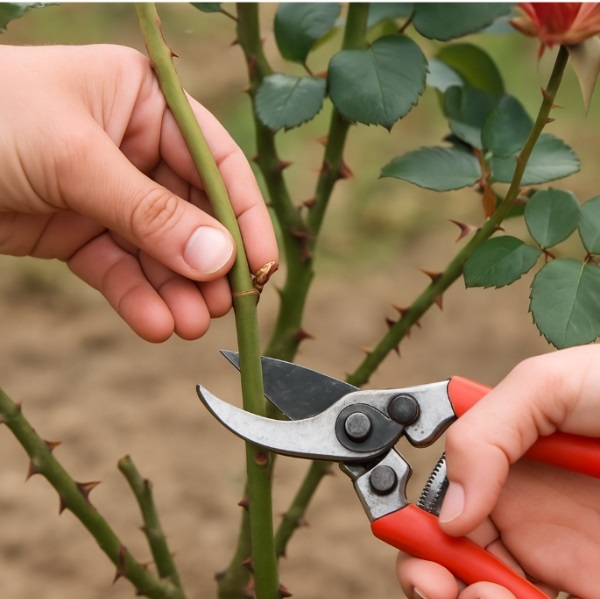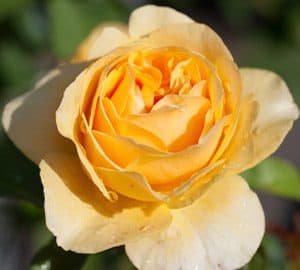
How to Grow Roses: Types, Care Tips & Pruning
Roses are one of the most beloved blooms in the garden—but with so many types and care techniques to choose from, it’s easy to feel overwhelmed. Whether you’re planting your first rose or adding to a long-time collection, this guide will walk you through everything you need to know—from choosing the right type to proper planting, seasonal care, and pruning tips. Keep reading to discover how to grow healthy, beautiful roses that will thrive all season long.
Choosing the Right Type of Rose
Do you ever feel overwhelmed by the sheer number of roses available? You’re not alone! Every spring, when our long-anticipated shipment of roses arrives at Canadale, we even find ourselves feeling a little dizzy with all the beautiful choices.
The section below will guide you through the different types of roses we carry and how they’re generally used in the garden. But before diving in, here are a few helpful tips:
- Think about where your roses will go and what purpose they’ll serve—whether it’s creating a flowering hedge, filling a border, or planting a standout specimen.
- Have a general idea of the colour palette you’d like to see in your garden.
- Don’t forget to read the plant tags and signage—these contain a wealth of helpful information about each rose.
And of course, our knowledgeable team at Canadale is always here to help you choose the perfect rose for your space and answer any questions you may have about growing them.
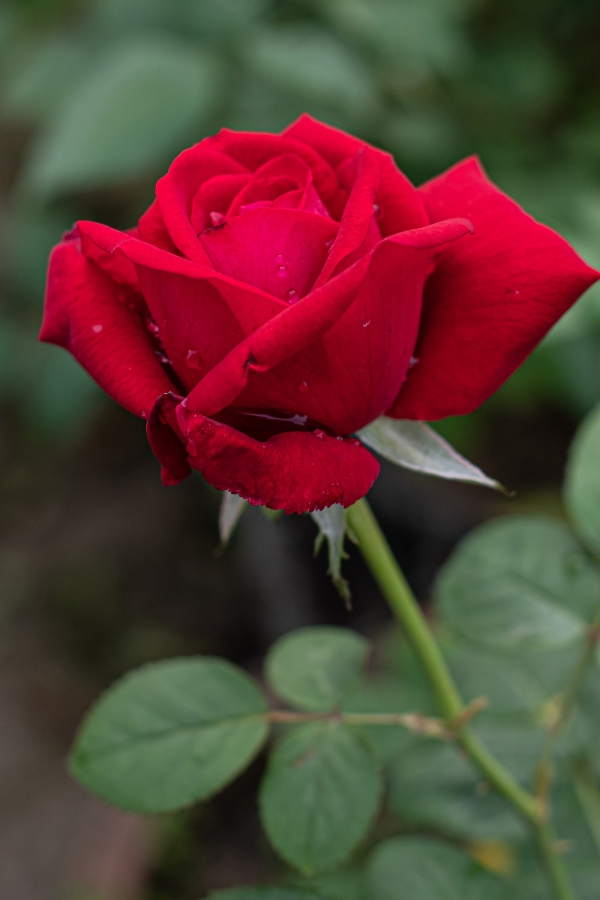
Shrub Roses
Shrub roses are an often underappreciated yet incredibly versatile group of roses that include types like hybrid teas, floribundas, and grandifloras. Many modern shrub roses are bred from hardy, disease-resistant species—some even with native rose heritage—making them low-maintenance and tough performers in the landscape. Perfect for mixed borders alongside lilac, forsythia, or mock orange, they also make stunning informal hedges or privacy screens. Many varieties produce bright red hips in the fall and winter, adding vibrant seasonal interest.
Hybrid Tea Roses
Hybrid Tea roses are classic garden favourites, prized for their large, many-petalled blooms that often appear singly on long, straight stems—perfect for cutting and bringing indoors. Flowers can be single or double, and many varieties are beautifully fragrant, adding sensory appeal to their striking form. Typically growing 60 to 125 cm tall and always grafted, these roses are ideal for formal garden settings where their elegance and structure can truly shine. Their timeless beauty and signature blooms make them a must-have for rose enthusiasts and traditional garden designs alike.
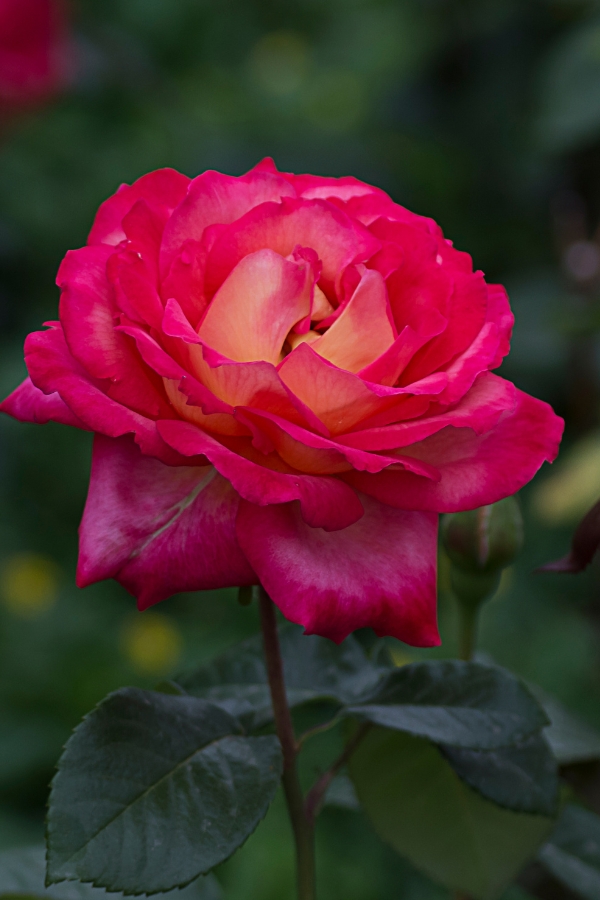
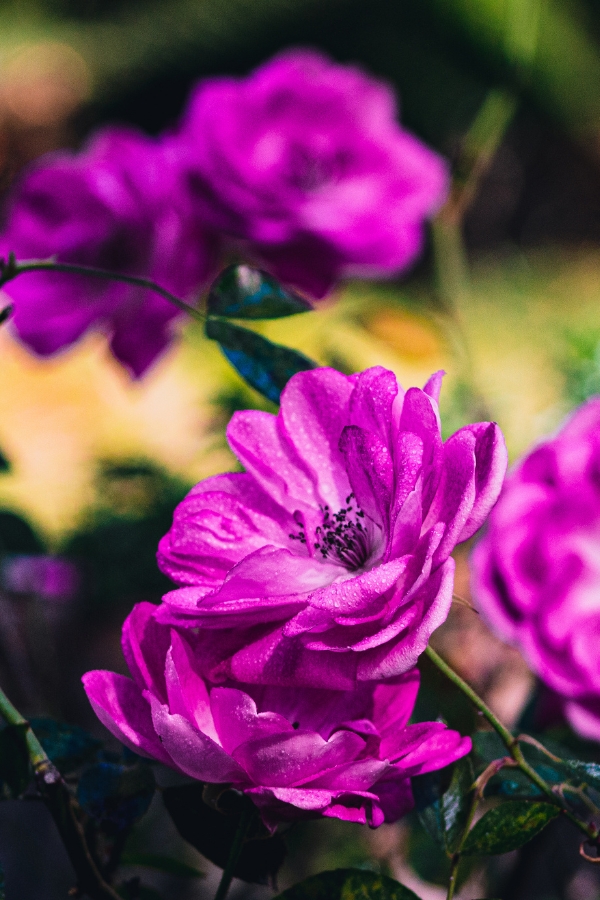
Floribunda Roses
Floribunda roses are compact, hardy shrubs known for their continuous, colourful blooms throughout the growing season. Their flowers—ranging from single to fully double—are produced in generous clusters, creating a vibrant, eye-catching display. Though the blooms are smaller than those of hybrid teas, floribundas are more cold-tolerant and incredibly reliable. Growing 40 to 100 cm tall and often grafted for strength, they’re perfect for mass planting in garden beds or dotted through foundation plantings to add long-lasting beauty and colour.
Grandiflora Roses
Grandiflora roses are a type of shrub rose that combine the best qualities of both hybrid teas and floribundas. They feature large, elegant blooms similar to hybrid teas, but instead of appearing singly, the flowers are produced in clusters for an even more striking display. These roses are known for their vigorous growth and tall, upright habit—often reaching heights of 100 to 200 cm—making them ideal for the back of garden beds or as bold statement plants. Always grafted for strength and performance, Grandifloras offer both impressive size and classic rose beauty in one showy package.
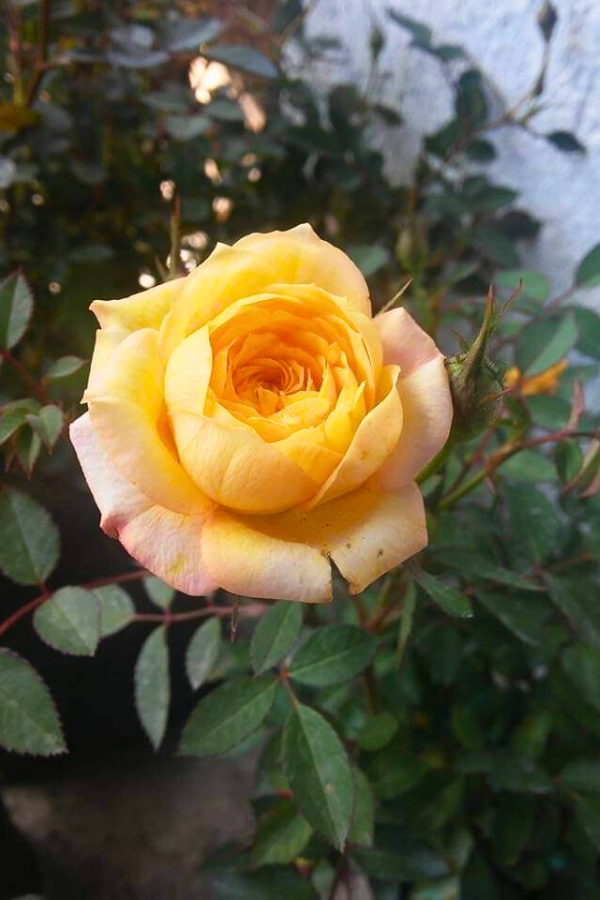
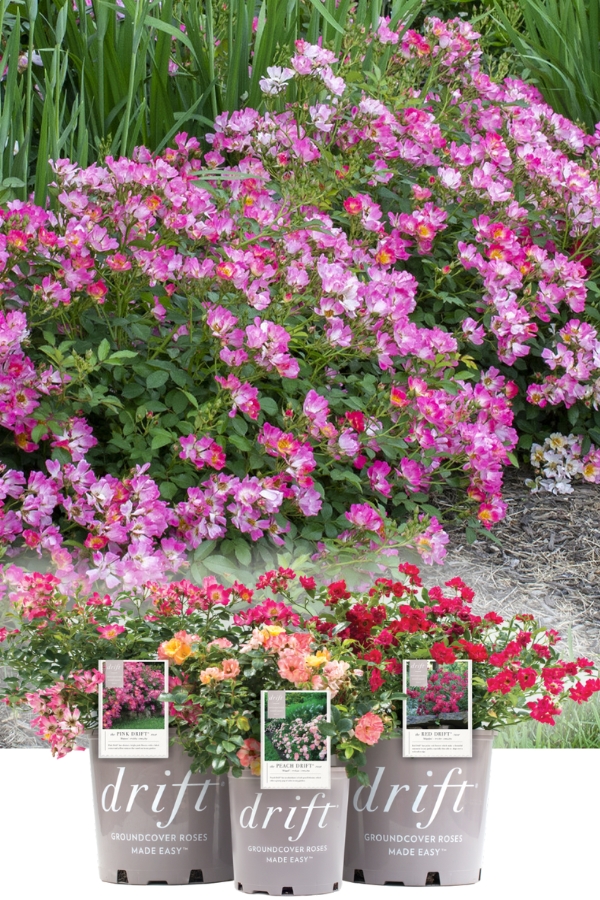
Drift® Roses (Carpet Rose)
Drift® Roses are compact, low-maintenance groundcover roses that bloom continuously from spring to frost, offering vibrant colours like pink, red, coral, and apricot. Their petite size—reaching only 1.5 to 2 feet in height and spreading 2 to 3 feet wide—makes them perfect for small gardens, borders, and container planting. These roses are disease-resistant and self-cleaning, requiring minimal upkeep. Ideal for mass plantings, slopes for erosion control, or as edging along pathways, Drift® Roses provide a lush, colourful carpet that enhances any landscape.
Photo Credit: Drift Roses (driftroses.com)
Knock Out® Roses
Knock Out® Roses are renowned for their vibrant, continuous blooms from spring until the first frost, offering a spectrum of colours including red, pink, yellow, white, coral, and orange. Their compact, bushy growth habit, typically reaching 3 to 4 feet in height and width, makes them versatile for various garden settings. Highly disease-resistant and self-cleaning, these roses require minimal maintenance, eliminating the need for frequent deadheading. Ideal for mixed beds, borders, hedges, or as standalone specimens, Knock Out® Roses provide continuous colour and appeal in landscapes.
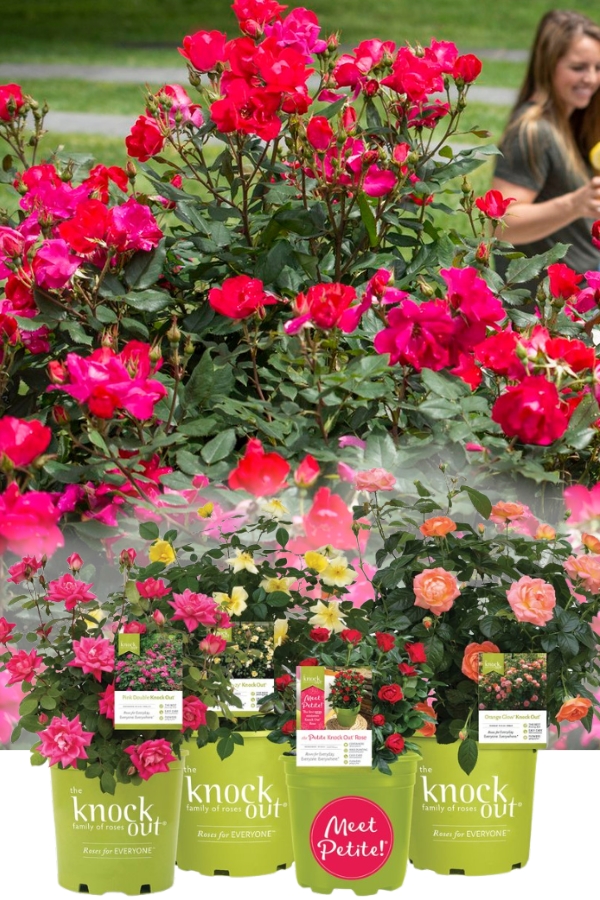
Photo Credit: the Knock Out Family of Roses (knockoutroses.com)
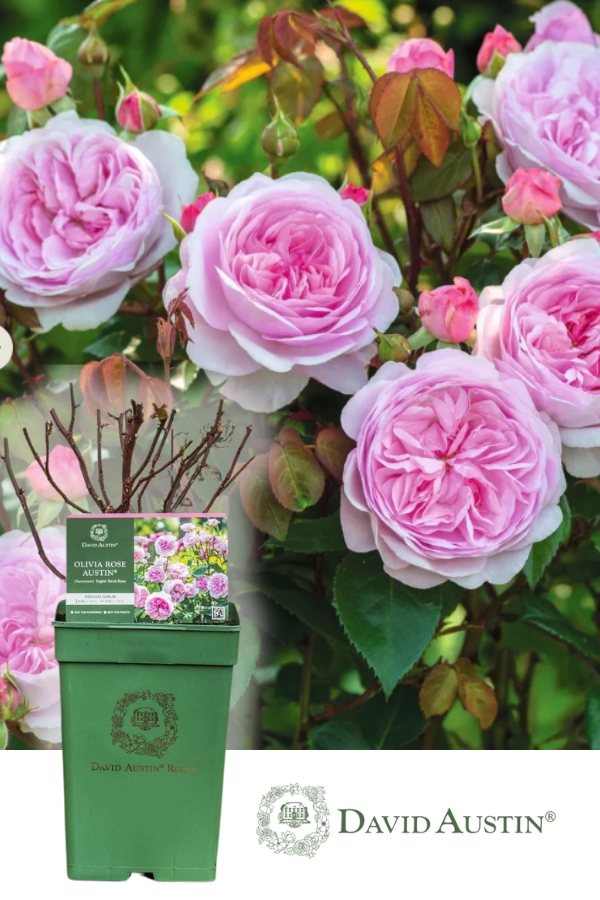
David Austin® Roses
David Austin® Roses are world-renowned for their breathtaking beauty, combining the romantic charm and fragrance of old English roses with the repeat-flowering nature of modern varieties. Each rose is bred for exceptional form, heady perfume, and lush, full blooms that resemble peonies—often in soft pastel tones or rich jewel colours. The name David Austin has become synonymous with craftsmanship, elegance, and a passion for perfecting the rose, with over 60 years of dedication to creating roses that are both garden-worthy and poetic. Ideal for cottage gardens, mixed borders, or as luxurious focal points, David Austin® Roses bring an unmistakable touch of timeless romance to any landscape.
Photo Credit: David Austin Roses (eu.davidaustinroses.com)
Climbing Roses
Climbing roses are vigorous, sprawling plants known for their ability to scale trellises, arbours, fences, and other garden structures with ease. Their blooms can range from single to fully double and come in a wide variety of colours and forms, depending on the rose type. For the best floral display, the main canes should be trained to grow horizontally along their support—this encourages side shoots, which grow upward and produce an abundance of flowers. With their graceful, vertical growth and romantic blooms, climbing roses are perfect for adding height, structure, and charm to any landscape.
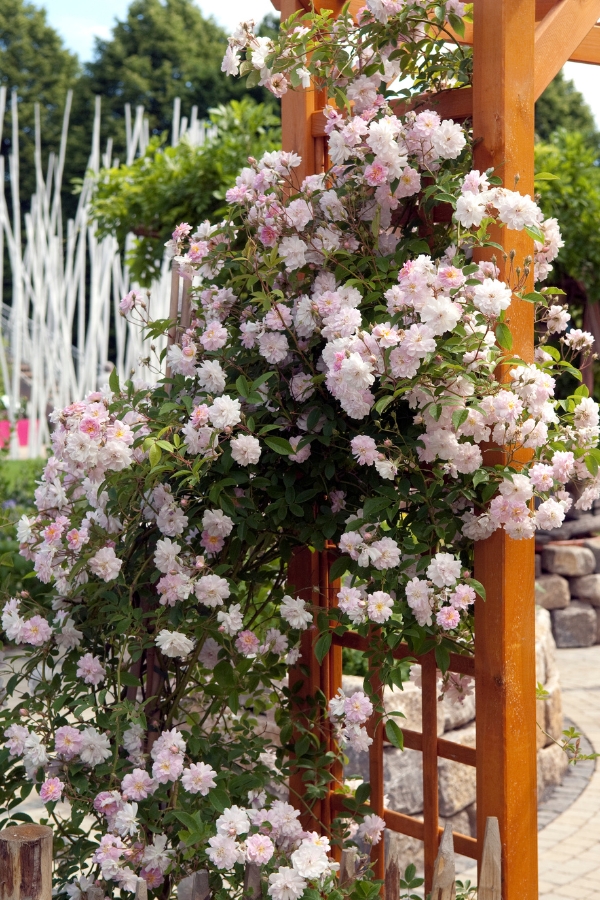
Seasonal Rose Care Tips
Spring & Summer
- Use a brand name, rose food, weekly. Established roses should be fed every week from early spring to late August.
- Watch for powdery mildew. On the premise that prevention is easier than a cure, spray once per week with insecticide/fungicide.
Fall or Early Winter
- Switch from using rose food to using straight potassium (0-0-20) fertilizer for overwintering vigour.
- Let the last flowers go to seed; do not prune.
- When the soil is frozen, tie up the rose canes, install a rose collar and fill it with soil.
The Following Spring
- Remove the collar and then the soil as it thaws.
- Cut back the strongest canes to 10 or 15 cm, cutting to an outward-facing bud.
- Start to fertilize when growth begins. Ever-blooming roses need to be well nourished.
How To Grow Roses
Soil
The rose bed or planting hole should be well-prepared. Dig deep, at least 45 cm. The soil should be two parts sandy clay loam, one part well-composted manure, and one part peat moss, plus 4 kg of bonemeal for every 10 square metres or a cupful for each plant.
Depth of Planting
Choice roses are typically propagated by budding select varieties onto hardy rootstock. The bud union—often visible as a slightly swollen area near the base of the canes—should be planted 5 to 10 cm below the soil surface in our Canadian climate. This extra depth helps protect the graft from harsh winter conditions.
Keep in mind that planting instructions from American or English sources may recommend placing the bud union above the soil, but that guidance is not suitable for Canadian gardens.
Fertilizer
Newly planted, potted roses should be fertilized with diluted transplant fertilizer (5-15-5). Follow the label’s instructions. Established roses should be fertilized with name-brand rose food. These formulations contain many trace elements essential to the roses’ health. Apply in early May, mid-June and again in mid-July. In fall or early winter, fertilize with straight potassium (0-0-20) for overwintering vigour.
Watering
Roses should be watered deeply and well once per week. The best method in beds is to use a trickle hose that can be left running slowly on the ground, thereby avoiding wetting of the foliage and splattering of the soil.
Mulching
Shredded bark mulch makes excellent mulch for roses. They dress the bed, conserve moisture and keep down weeds.
Winterizing
Start thinking of over-wintering your roses in mid-July at the time of your last fertilization. The rose canes should be allowed to harden off; they should not be succulent. Reduce the watering schedule in the fall. Allow the last flush of flowers on the plant to go to seed.
When the ground is frozen (not too early, mid-to-late November), “hill-up” the rose canes with soil, which you have kept unfrozen for this specific purpose, to a height of 45 cm. Do not prune at this time unless the canes are so tall they could whip about in the winter winds, thereby damaging themselves or disturbing the hill of protective soil. Leave as much cane as possible. In beds or in mass plantings, rose collars are a must — they are easy to use and reduce the amount of soil required. Where collars are not used, the hill of soil, once frozen, should be covered with evergreen boughs after Christmas so that the soil remains frozen and does not thaw in mild spells.
How to Prune Roses
Spring Pruning
As soon as the ground thaws in early spring, begin by removing any protective coverings such as evergreen boughs or rose collars. Once the soil is workable, carefully clear it away from the base of the plant and perform a rough prune by trimming back any winter-killed tips to the live, green wood.
A great indicator that it’s time for your final spring pruning is the blooming of Forsythia. When these yellow flowers appear, your rose bushes should be showing signs of life—buds will be swelling but not yet leafing out.
At this stage:
- Cut out any dead stems and twiggy or weak growth.
- Retain only the three or four strongest canes.
- Cut these canes down to about 15 cm (6 inches) in height.
- Always prune to an outward-facing bud, cutting about 6 mm (¼ inch) above it on a slight angle.
This encourages outward growth, creating a healthy, open shape for air circulation and better bloom production.
Summer Pruning to Encourage Re-Flowering
To keep your roses blooming throughout the season, mid-summer pruning is key. This technique goes beyond simply deadheading:
- Locate the sets of leaves beneath the spent bloom. Typically, you’ll see a single leaf, then sets of three leaflets, and further down, a set with five leaflets.
- Prune the stem back to just above the first five-leaflet leaf set.
- As with spring pruning, always cut just above an outward-facing bud—this is where new growth will emerge.
This deeper pruning technique promotes strong, vigorous stems and faster re-blooming. It’s commonly used in the cut-flower rose trade to ensure a continuous flush of high-quality blooms.
The Parts of a Rose Plant
Understanding the anatomy of a rose plant is essential for effective care and maintenance. Here’s an overview of the key parts:
Roots – The underground structures that anchor the plant and absorb water and nutrients.
Canes – The main stems that grow from the base, supporting leaves and flowers.
Leaves – Composed of multiple leaflets, they are responsible for photosynthesis.
Buds – Growth points that can develop into new stems, leaves, or flowers.
Flowers – The reproductive structures, typically comprising petals, sepals, stamens, and pistils.
Thorns (Prickles) – Sharp outgrowths on canes that provide protection.
Outward-Facing Bud – A bud oriented away from the plant’s center, crucial in pruning to encourage open growth and air circulation.
By familiarizing yourself with these components, you can better understand your rose plant’s needs and ensure its health and beauty.
